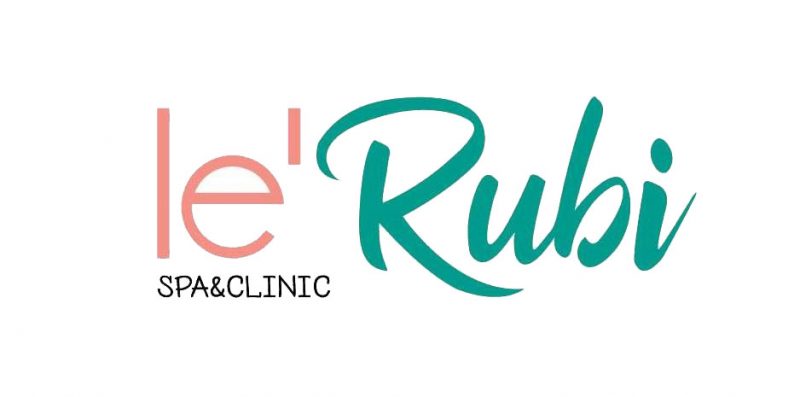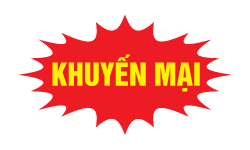FinTech
ATS: The new barrier to employment?
Danh mục bài viết
Content
Scheduling is usually the first touch-point with a promising candidate. It’s important ats inventory meaning to weigh the advantages against potential drawbacks and consider what internal measures could help mitigate these risks. Candidates may manipulate their resumes for ATS, ”trying to beat the system.” A rarely successful and unwanted outcome.
ATS Benefits: How ATS Improves Time, Cost and Quality of Hire
As for positive feedback, they praise Teamtailor’s automations, customization and features. Teamtailor doesn’t advertise its prices online and asks consumers to submit a price request. In general, we https://www.xcritical.com/ dislike this approach, which leaves you to blindly enter a company’s sales funnel with zero pricing information up front.
Company Size and Recruitment Volume
Moreover, the inherent limitations of ATS in capturing qualitative attributes undermine the essence of human connection, relegating recruitment to a mechanical exercise devoid of empathy and intuition. Herein lies the transformative potential of adept integration strategies, wherein the seamless fusion of ATS with existing recruitment methodologies unlocks synergies hitherto untapped. A person might discern from a resume that a candidate, while not a direct fit, brings a unique blend of experiences that could be invaluable. Applicant Tracking Systems (ATS), the very epitome of recruitment automation, often play the role of these gatekeepers in the modern job market. To truly understand the dance, we must weigh the pros against the cons, revealing the intricate ballet between efficiency and human touch. Often, the tracking system will retain the resumes that were initially disqualified.
Machine learning algorithms often involve systematic bias, causing unethical hiring practices:
This way, your ATS can scale as you grow — without becoming exorbitantly expensive in time. When determining the price of an ATS system, it’s important to understand the pricing structures and the various factors that influence the Total Cost of Ownership (TCO). To get started, here’s a breakdown of pricing ranges for businesses of different sizes. While Fountain excels in specialized recruitment, it is best suited for large-scale hiring operations in the U.S.
- This means you’ll need to import all your existing candidate data, job postings, and other relevant information into your new system.
- Considering how many websites, pages, and posts there are online, there needs to be a way to rapidly digest and analyze that massive amount of data, or we’d never be able to find anything on the web.
- If you’re looking for feedback from real-world business owners who have tried HiringThing, you won’t find much online.
- Diversify your applicant pool and stand out in a crowded hiring space with job board integration features.
- One of the other important advantages is that it centralizes all applicant data, allowing teams to work more collaboratively while maintaining data integrity.
- An ATS achieves this by automatically sorting based on relevant skills while ignoring identifying features like names, photos, or addresses.
What Are the Best Practices for ATS in Recruitment?
This ensures that no information gets lost and that there’s consistency in the hiring process. One of the worst parts of applying for a job waiting for extended periods of time to hear about the status of the application. With an applicant tracking system, you can create automated responses that allow candidates to receive updates regularly. Selecting the right vendor and creating an ideal hiring process takes time.
One stand-out perk we noticed is the Google Chrome extension for Xing and LinkedIn. You can source candidates more quickly this way, adding their records to your database with just a few clicks. This powerhouse tool is especially handy if you have large amounts of data to deal with. The résumé parser can sift through hundreds of résumés, for instance, while the Kanban view lets you visualize data like candidate pipelines in a simplified overview.
In addition to offering various package tiers, Zoho Recruit also has some add-ons you can pay for to customize your tool. For example, the video interview add-on costs $12 per license per month and lets you conduct live or one-way video interviews. Any business owner who wants to address unconscious bias and promote inclusion would do well to check this one out. It starts with a self-assessment that companies can use to identify areas in need of improvement in terms of DEI. AI tools are just one way 100Hires tries to save busy entrepreneurs time. You can also reduce manual effort with automations, for example with automated candidate follow-ups and updates.
An applicant tracking system, or ATS, is a software application that helps organizations manage recruitment workflows. Just as a customer relationship management (CRM) system helps companies track and optimize customer interactions, an ATS does the same with candidates. One of the most significant yet often overlooked benefits of an ATS is its potential to reduce employee turnover. Because ATS systems allow recruiters to focus on identifying the best possible candidates for each role, you enjoy higher quality hires.
A strong employer brand is valuable because it helps attract top talent, driving your cost per hire and time to hire down even more. This is important because studies have shown that 76%[1] of candidates accepted a job offer because of a positive experience. The time that recruiters save also allows them to focus on identifying the best candidate for a role, thereby improving the quality of their hires. Most ATS systems offer standard reporting features, which are perfect for most users.
Multiple tools, manual processes and spreadsheets make it difficult for management to eaven measure how much time is spent in each phase. For ideas, research similar job postings and profiles on LinkedIn, as well as people who hold a position similar to what you’re hiring. Small to medium businesses are also jumping on the ATS bandwagon due to the considerable time and cost savings they can provide. Using an ATS for recruitment can save a small company with only a handful of employees thousands of dollars in tedious time and effort.
While knowing the core subscription fees is essential to planning your budget, it’s crucial to factor in these additional costs. This helps you accurately calculate your TCO and get a complete picture of the overall investment. However, monthly plans can be more flexible, especially for companies with fluctuating hiring needs. Business owners who don’t want to be locked into a contract might also prefer monthly payments, even though they’re more expensive.
It’s also good to include variations of these top skills and qualifications, to ensure the ATS catches qualified candidates no matter which phrasing the applicants use. You might use the keyword “customer service experience” in the job description. But what if a qualified applicant’s resume uses something like “customer support specialist” or “experience working with customers” instead? While these are saying the same thing in different ways, their resume still may not get past your ATS if it doesn’t know to also look for all of those variations. Research shows that 92% of candidates don’t complete their applications. Reasons for this vary, but your ATS can help you reduce drop-off rates by improving the candidate experience.
Make sure you’re abiding by all hiring laws at each stage of the process, and are familiar with any specific requirements that might be applicable to your industry. To find the ATS that best fits your needs and budget, the Society for Human Resource Management (SHRM) offers a helpful comparison chart that lists platforms by sample clients, cost, and system features. Research shows that 78% of recruiter s who use an ATS have improved the quality of candidates they hire. Cost-per-hire is calculated based on different variables, including recruiter salaries, employee referral bonuses, job advertising costs, travel and relocation costs, etc.
Staying on top of regulatory requirements is an important aspect of any hiring program. Using a tracking system can benefit an organization by configuring processes and workflows to meet requirements set by EEOC, OFCCP, and GDPR. This is obviously extremely important, not only for the ATS system to identify fitting candidates, but also to entice the right candidates to decide whether or not to apply in the first place.
These costs will vary depending on the specific tools you’re integrating, their number, the complexity of the integration, and whether the vendor offers pre-built connectors for each tool. Fountain stands out as a recruitment and onboarding platform built specifically for companies that need to hire and manage a large frontline workforce. Catering to industries such as retail, logistics, healthcare, and hospitality, Fountain is ideal for enterprises that prioritize efficiency and scalability in hiring. In this review, we’ll explore Fountain’s strengths, limitations, and suitability for organizations with high-volume hiring demands. There are so many different facets to what makes a candidate a high-quality hire — do you want the smartest person in that stack of resumes if they lack the ability to communicate effectively? Is the most experienced candidate a good fit if they’re incapable of accepting feedback?
At the end of this blog, we’re going to share a secret about some major changes that are taking place at Titus and how our viewpoint on ATSs has made some huge impacts on what we offer as an organization. Download our 2024 Hiring and Salary Guide to read helpful advice from industry experts. An ATS has some disadvantages as well, which recruiters should consider. An ATS collects a significant amount of data, which can result in a valuable database containing candidate information and their activity history.
Fountain’s specialized features make it ideal for organizations needing to manage a constant flow of new talent in frontline roles. Automated tools and reports take the administrative effort out of compliance. You can expect to pay anywhere from $5,000 to $50,000 annually depending on the size of your business, and the type of system and features you’re looking for in an ATS. Some providers offer free services for individuals who process under 20 jobs a year. Cost-per-hire is calculated based on different variables, including performance reviews, ramp-up time, turnover and retention rates, hiring manager satisfaction etc.
Consequently, there exists a palpable risk of inadvertently excluding qualified candidates based on arbitrary criteria, thereby diluting the efficacy of the recruitment process. The system can also help screen applicants by checking for keywords in résumés and cover letters that match the skills required for each job. This eliminates the need to manually sorting through hundreds of applications. Finally, an ATS can also provide valuable analytics that allow recruiters to measure the effectiveness of their recruitment process. This information can be used to make adjustments to improve the efficiency and accuracy of future hiring processes.





